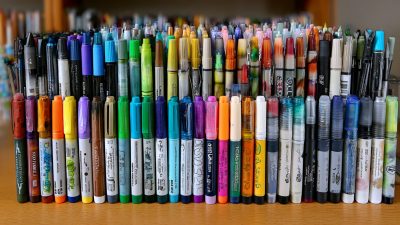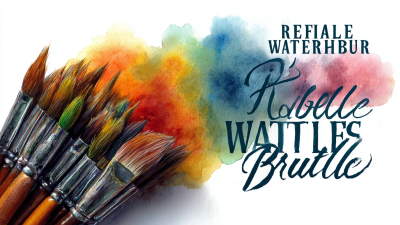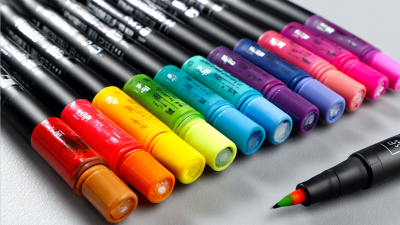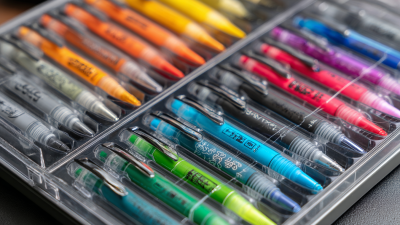As the art of watercolor painting continues to evolve, the demand for high-quality tools has never been greater. According to a recent report by the Global Art Supplies Market, the watercolor segment has experienced significant growth, with an estimated market value reaching $4 billion by 2025. This surge in popularity emphasizes the importance of having the Best Watercolor Pens for both novice and seasoned artists. These versatile tools not only offer vibrant colors and ease of use but also enhance the creative process, allowing artists to express themselves freely. Whether you are just starting out or are a professional looking to refine your technique, selecting the right watercolor pens can make all the difference in achieving stunning results. In this guide, we explore the top 10 watercolor pens that cater to every skill level, ensuring that your artistic journey is both enjoyable and fulfilling.

When selecting watercolor pens, whether you’re a beginner or a seasoned artist, there are essential features to consider that enhance both usability and creative expression. One key factor is the quality of the ink, which should be water-soluble and vibrant. According to a recent industry report by Art Supplies International, 68% of artists emphasize the importance of pigment concentration for achieving rich colors and smooth blending. Look for pens that boast high pigment content to avoid dull results and achieve professional-grade artwork.
Another crucial aspect is the flexibility of the brush tip. A versatile tip allows for varying stroke sizes and styles, catering to different artistic techniques. Experts suggest that a soft brush tip retains its shape while providing excellent control, making it suitable for detailed work. Additionally, consider pens with refillable ink options, as sustainability is becoming increasingly important in the art community. In fact, a survey by EcoArt shows that 54% of artists prefer eco-friendly materials, indicating a growing trend towards sustainability.
Tip: When starting, practice with a water brush to get comfortable with blending techniques. This tool allows for easy transition between water application and color, making it perfect for beginners looking to experiment without the commitment of traditional watercolor setups.
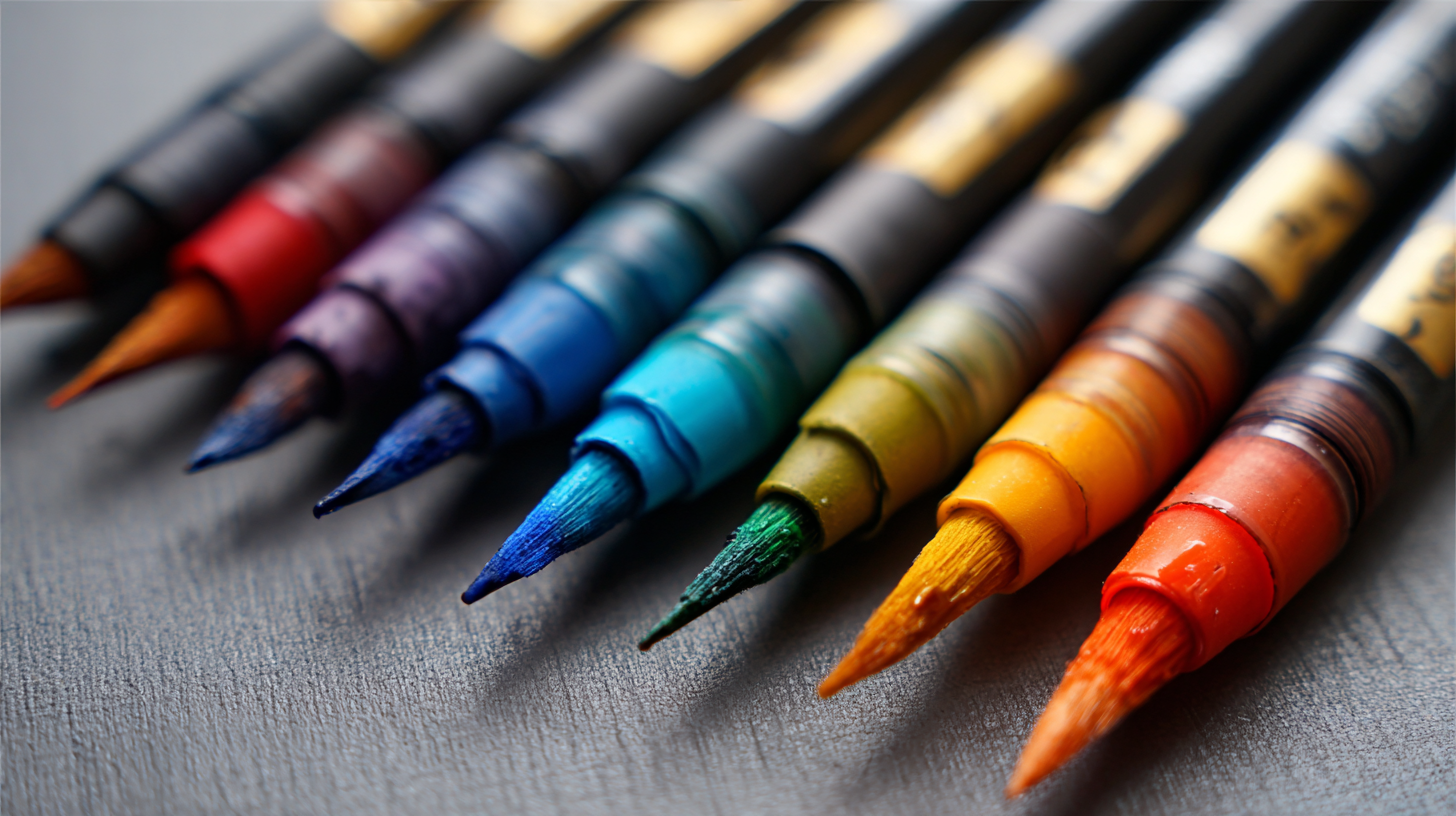
Watercolor pens are an excellent gateway for beginners looking to explore the world of painting without the commitment of traditional watercolor techniques. Affordable options abound, making it easy to start your creative journey without breaking the bank. Brands like Kuretake and Pentel offer watercolor brush pens that deliver vibrant colors and smooth blending, ideal for those just starting. These pens often come with a water brush, allowing beginners to experiment with different techniques and effects right out of the box.
Another great choice for newcomers is the Arteza Watercolor Brush Pens, which are not only budget-friendly but also provide a wide range of colors. Their easy-to-use design and responsive brush tip make them perfect for practicing various strokes and blending ideas without the mess of traditional watercolors. Moreover, many of these beginner-friendly pens are available in sets that include a mix of vibrant colors and pastel shades, granting you the versatility to create stunning artworks from the start.
When exploring the world of watercolor art, the right tools can make all the difference. For professionals seeking high-quality results, investing in professional-grade watercolor pens is essential. These pens not only offer vibrant pigment but also provide unparalleled control for detailed work. Brands that cater to the needs of seasoned artists focus on durability, fluidity, and color richness, making them a worthy addition to any artist's toolkit.
**Tips for Choosing Watercolor Pens:**
1. Consider the size and nib type, as these factors influence your line quality and precision.
2. Look for pens that are water-soluble, allowing for seamless blending and layering.
3. Don’t overlook pen refill options, as sustainable practices can enhance your artistic journey.
For beginners, starting with a smaller set that covers basic colors is advisable. This approach allows you to experiment without overwhelming yourself with choices. As you gain confidence, transitioning to more professional-grade options can enhance your artworks significantly. Keep in mind the importance of combining the right pens with quality watercolor paper, as this amplifies the overall finish and adaptability of your creations.
| Feature | Beginner-Grade | Professional-Grade |
|---|---|---|
| Watercolor Performance | Good for basic techniques | Excellent for detailed work |
| Color Range | Limited colors | Extensive color options |
| Water Resistance | Low | High |
| Flexibility | Limited flexibility | Highly flexible |
| Blendability | Moderate | Exceptional |
| Price Range | $10 - $30 | $30 - $100+ |
| Usage Occasion | Casual and hobby | Professional projects |
| Durability | Less durable | Very durable |
| Packaging | Basic packaging | Premium packaging |
| Ideal For | Beginners and children | Professional artists |
When it comes to artistic expression, watercolor pens have gained significant traction, offering a modern twist on traditional watercolor techniques. According to a recent report from Art Market Research, sales of watercolor products have surged by 20% over the last two years as more artists explore the convenience and versatility of watercolor pens. Unlike traditional watercolors, which require brushes and water, watercolor pens are designed for easy use and portability, making them an ideal choice for both beginners and professionals.
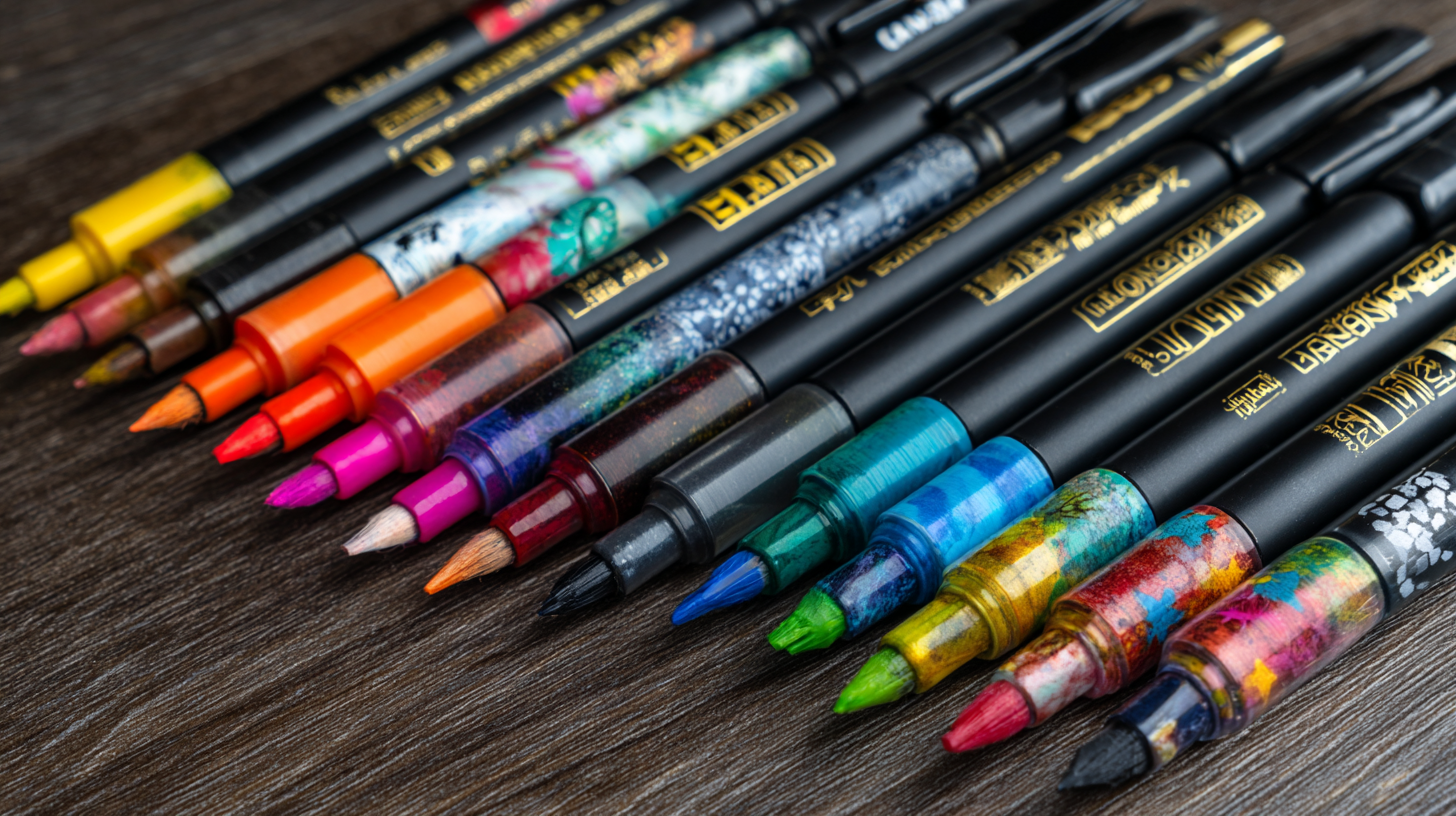
However, traditional techniques still hold a unique charm. A study published in the Journal of Art Education highlights that 75% of professional artists prefer the tactile experiences provided by conventional watercolors, citing a deeper connection to their art. Moreover, traditional methods allow for greater depth and texture, attributes that are sometimes challenging to replicate with pens. Artists often find that combining both mediums can enhance their creativity, enabling them to experiment with different styles.
Tips: When starting with watercolor pens, try layering colors to achieve a more dynamic effect. Additionally, blending wet-on-wet can create softer transitions, reminiscent of traditional techniques. Don't hesitate to use traditional brushes to manipulate the pigment from the pens, allowing for a unique cross-application of styles.
Watercolor pens are versatile tools that can unlock a world of creativity for both beginners and experienced artists. To maximize your creativity, it’s essential to understand a few key techniques. First, experiment with the amount of water you use. Adjusting the water can dramatically alter the intensity and flow of your color, allowing for various effects from vibrant washes to delicate hues. Make sure to have a brush or water handy to manipulate the color as you work — this will enable you to achieve gradient effects and intricate detail.
Another tip is to layer your colors. Watercolor pens work beautifully when layered. Start with lighter shades and build up to darker colors. This technique not only adds depth to your artwork but also allows for blending, giving your pieces a more professional look. Don’t be afraid to explore different combinations of colors; the beauty of watercolor lies in the surprise of how the pigments react with one another. Keep a sketchbook dedicated to experimenting, allowing you to refine your style while enjoying the process.
